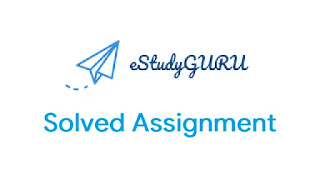
Animal welfare assessment can provide evidence of the welfare state of an animal, group of animals or a management system, either on a single day and time, or repeatedly over time. Why might we want to have this information? As we have discussed previously, and will continue to consider in later Units, we have a moral or ethical duty to ensure that animals in our care are properly looked after. Animal welfare assessment is a way of investigating whether animals are being properly cared for, and providing evidence for the current welfare state of the animals. Animal welfare assessment also provides a means of checking progress in improving animal welfare, for example as a result of changing management practices.
Usefulness of Assessing Animal Welfare
There are many reasons why assessing animal welfare can be a useful tool.
1) The care of some animals, such as animals in farms and zoos or those used in research or education, may be covered by regulations or legislation at different levels:
a) National standards
b) Regional standards
c) International standards
2) Failure to meet standards can lead to sanctions such as an inability to export products to particular countries or regions.
3) In order to ensure compliance with these regulations there needs to a system of checking that animal welfare has met particular standards in a way that is fair and impartial, and considers the same measures or characteristics, regardless of where the animal lives.
4) Using a defined scheme of welfare assessment can allow this monitoring in a way that allows different facilities to be considered in the same way.
5) Particular animal welfare standards may be applied by a retailer (for food animals) or some other accreditation or certification body.
6) Often membership of these bodies will be voluntary, for example a zoo may choose to become a member of the World Association of Zoos and Aquaria (WAZA). However, for food animals it may be important for a farmer to be accredited, or a member of a group or scheme, to allow access to a particular market.
7) Some schemes also can charge a premium price for their products so membership can have significant financial advantages. In becoming a member, preferred supplier or being accredited there is a need to abide by the guidelines, rules or regulations of the scheme or body.
8) Where this includes animal welfare then the accrediting body or association will want to ensure that its members do adhere to the same practices and standards that it has laid out, especially if these are the main attributes, it is promoting.
9) This is usually achieved by some form of inspection, which will include an assessment of the state of animal welfare on the facility.
Continuous Improvement
Welfare assessments may also be used to drive changes and developments in welfare. Regular assessments allow progress towards improved animal welfare to be assessed, and can identify the main areas where additional work or changes are required. These may be self-assessments, conducted by the animal keeper, where progress against a goal can be monitored, or conducted within a welfare scheme which rewards progress as a facility improves welfare. For example, some welfare schemes, e.g. some of those for food animals, which aim to promote high welfare status, may have a series of levels which allow a farm to move up from one level to the next by achieving particular welfare goals.
The goal of most welfare assessment schemes is to ensure minimum standards, below which welfare must not fall, and compliance with legislative or other standards for welfare. Some schemes also aim to reward systems or facilities that provide an enhanced standard of welfare. These schemes can be important tools to bring about improvements in animal welfare. They can act by identifying which aspects of animal welfare needs to be improved, and can also be learning aids, by demonstrating what good welfare should be aiming to achieve. In this function they can show and educate animal keepers in improved ways to keep and manage their animals. Some schemes allow animal managers to see how well they are doing in comparison to others (e.g. whether their farm or facility falls in the upper or lower quartile for a particular measure). This can promote competition and motivation to improve, particularly by demonstrating that it is possible to achieve better welfare, and this is not some idealised or unachievable endpoint.



0 Comments